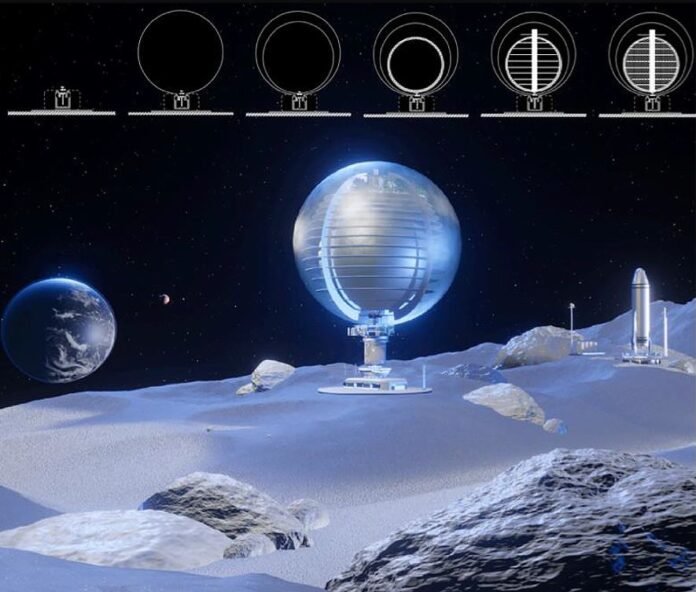Humanity will eventually need somewhere to live on the Moon. While aesthetics might not be the primary consideration when deciding what kind of habitat to build, it sure doesn’t hurt. The more pleasing the look of the habitat, the better, but ultimately, the functionality will determine whether or not it will be built. Dr. Martin Bermudez thinks he found a sweet synergy that was both functional and aesthetically pleasing with his design for a spherical lunar habitat made out of blown glass. NASA apparently agrees there’s potential there, as he recently received a NASA Institute for Advanced Concepts (NIAC) Phase I grant to flesh out the concept further.
Bermudez’s vision’s artistic design looks like something out of an Arthur C. Clarke novel: a glass sphere rising off the lunar surface that could potentially contain living and work areas for dozens of people. His firm, Skyeports, is founded on creating these blown glass structures in space.
The design has some challenges, as Dr. Bermudez discusses in an interview with Fraser. First is how to build this thing. It’s far too large to ship in any conventional lunar lander. However, there’s also no air on the Moon to use as the blown gas to create the spherical shape. Dr. Bermudez plans to utilize argon, which would initially be shipped up from Earth to fill the sphere. Argon has several advantages in that it’s a noble gas and not very reactive, so it’s unlikely to explode in the furnace while the glass is blown.
Credit – Skyeports YouTube Channel
Surprisingly, the lack of outside air pressure actually makes it easier to form a sphere than it would be on Earth since less pressure would be necessary to expand the sphere outwards. There are some nuances in the glass as well, with it being more like a glass lattice with embedded titanium or aluminum to make it stronger. Specific kinds of glass, such as borosilicate glass, could potentially add to the strength of the glass itself.
Most of the materials required to create such a structure could already be found on the lunar surface. Lunar regolith is full of the raw building materials required to make the structure work. Some of it has already been blasted into glass-like structures called agglutinates when micrometeoroids hit the lunar surface.
Those micrometeoroid impacts pose another risk to the glass sphere. Dr. Bermudez suggests having multiple layers of glass protecting the habitat, each with a layer of argon between them, like modern-day double-glazed windows. He suggests that spinning the outer layer might also provide some advantage, as will the spherical shape itself, as the impact force will dissipate better into the structure than it would on a flat surface.
Dr. Bermudez’s dreams don’t stop at the Moon, though. He suggests such a glass-blown structure could be useful on Mars or asteroids, where the microgravity would make it even easier to create these structures. On Mars, such a habitat might be limited to the top of Olympus Mons, where the atmosphere is thinner, and there isn’t as much wind and dust that could erode away the outer layers.
Many use cases exist for a structure like this, though many technical challenges remain. NIAC is the place for novel ideas that could potentially impact space exploration, and this one certainly fits that bill. As Dr. Bermudez works through de-risking his design, we get closer than ever to a future of aesthetically pleasing habitats on the Moon and everywhere else in the solar system.
Learn More:
NASA / Martin Bermudez – Lunar Glass Structure (LUNGS): Enabling Construction of Monolithic Habitats in Low-Gravity
UT – Glass Fibers in Lunar Regolith Could Help Build Structures on the Moon
UT – Recreating the Extreme Forces of an Asteroid Impact in the Lab
UT – Conceptual Design for a Lunar Habitat
Lead Image:
Artist’s concept of a lunar sphere on the lunar surface.
Credit – NASA / Martin Bermudez


